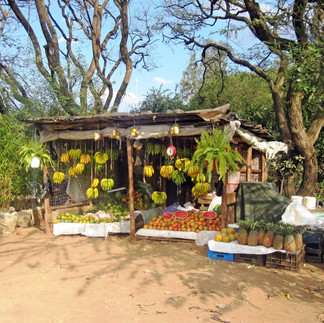Safeguarding Africa's Future: Reducing Chemical Toxins for a Healthier Planet
- Cecilia Wandiga

- Dec 2, 2023
- 2 min read
In the bustling landscape of African industrial processes, the imperative to reduce chemical toxins is more than an environmental consideration; it's a vital stride towards securing the health of our communities and preserving our planet. We explore the profound impacts of chemical toxins on water, air, soil, and climate change, shedding light on the toxins generating emissions and unveiling solutions for a healthier, sustainable future.
The healthy life we want
The Ripple Effect on Water, Air, Soil, and Climate Change:
Water Contamination: Chemical toxins from industrial processes can infiltrate water sources, posing a severe threat to aquatic ecosystems and endangering the health of communities dependent on these water bodies. From heavy metals to persistent organic pollutants, the contamination not only harms aquatic life but also jeopardizes the availability of safe drinking water.
Air Quality Degradation: Emissions from chemical toxins contribute to air pollution, impacting respiratory health and exacerbating climate change. Volatile organic compounds (VOCs) and hazardous air pollutants released during industrial activities can linger in the air, affecting both the immediate vicinity and regions far beyond the industrial zones.
Soil Degradation: The deposition of chemical pollutants in soil can lead to soil degradation, negatively affecting agricultural productivity and compromising food safety. Heavy metals, pesticides, and industrial waste can accumulate in the soil, disrupting ecosystems and posing long-term risks to both environmental and human health.
Climate Change Acceleration: Certain chemical toxins, such as greenhouse gases and ozone-depleting substances, contribute significantly to climate change. Addressing these emissions is crucial in mitigating the adverse effects of climate change, from extreme weather events to rising sea levels.
Identifying Toxins Generating Emissions:
Greenhouse Gases (GHGs): Industrial processes release carbon dioxide (CO2), methane (CH4), and nitrous oxide (N2O), contributing to the greenhouse effect and global warming.
Volatile Organic Compounds (VOCs): Found in various industrial solvents, VOCs contribute to ground-level ozone formation and air pollution.
Heavy Metals: Mercury, lead, and cadmium released from industrial activities can contaminate water sources, causing severe health issues and ecosystem disruption.
Solutions for Human and Planetary Health:
Green Technologies: Investing in eco-friendly and sustainable technologies can minimize the use of harmful chemicals and reduce emissions from industrial processes.
Regulatory Measures: Implementing stringent regulations and standards for industrial emissions and waste disposal is crucial for holding industries accountable and ensuring environmental protection.
Research and Innovation: Encouraging research into alternative, less toxic materials and processes fosters innovation and promotes the development of cleaner industrial practices.
Community Engagement: Empowering communities with knowledge and involving them in decision-making processes can create a collective commitment to sustainable practices and environmental stewardship.
In conclusion, the journey towards reducing chemical toxins in African industrial processes and products is a collective responsibility. By embracing sustainable practices and fostering innovation, we can forge a path towards a healthier, more resilient future for both humanity and our precious planet. It's time to act, safeguarding Africa's legacy for generations to come.















Comments